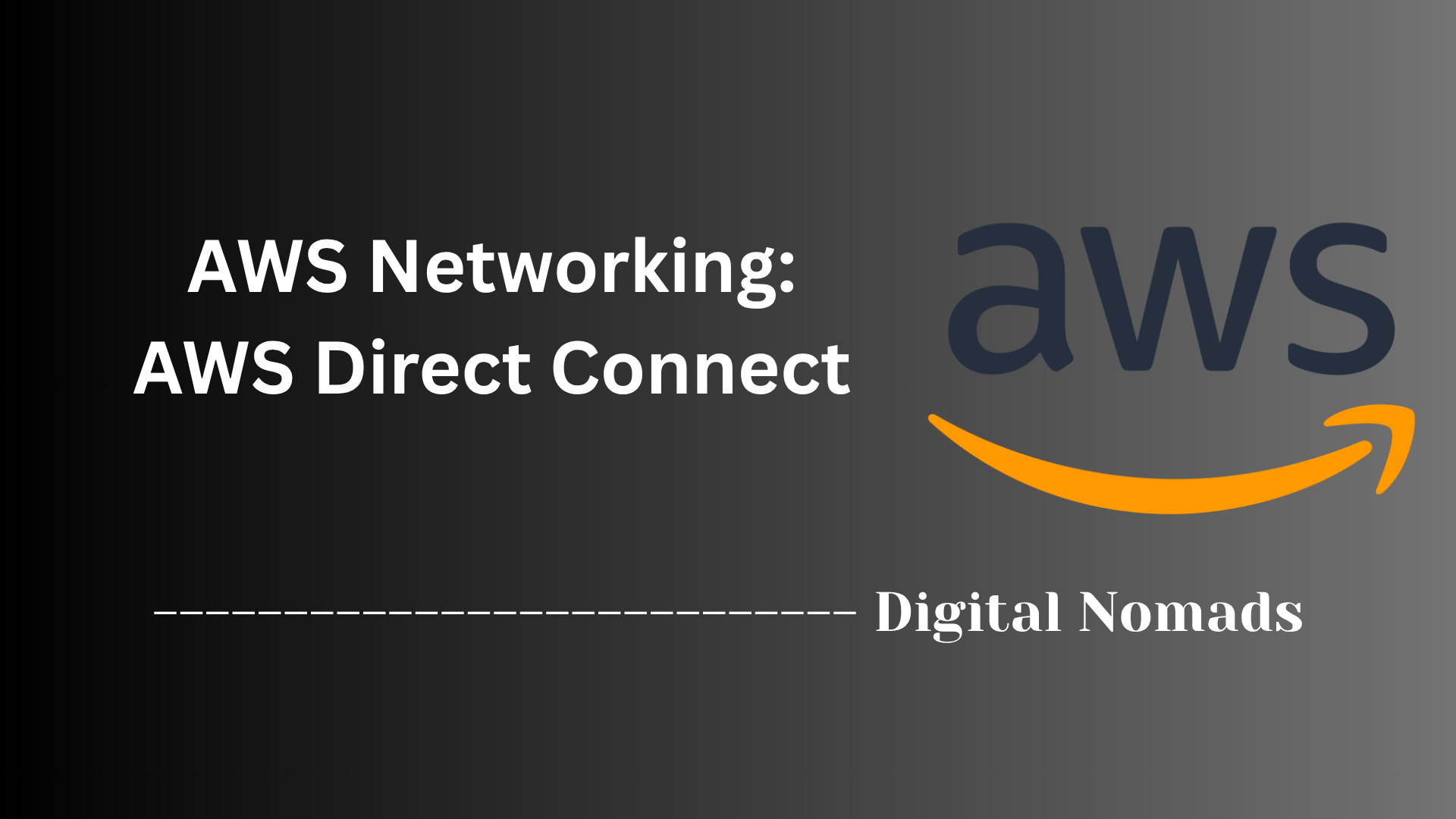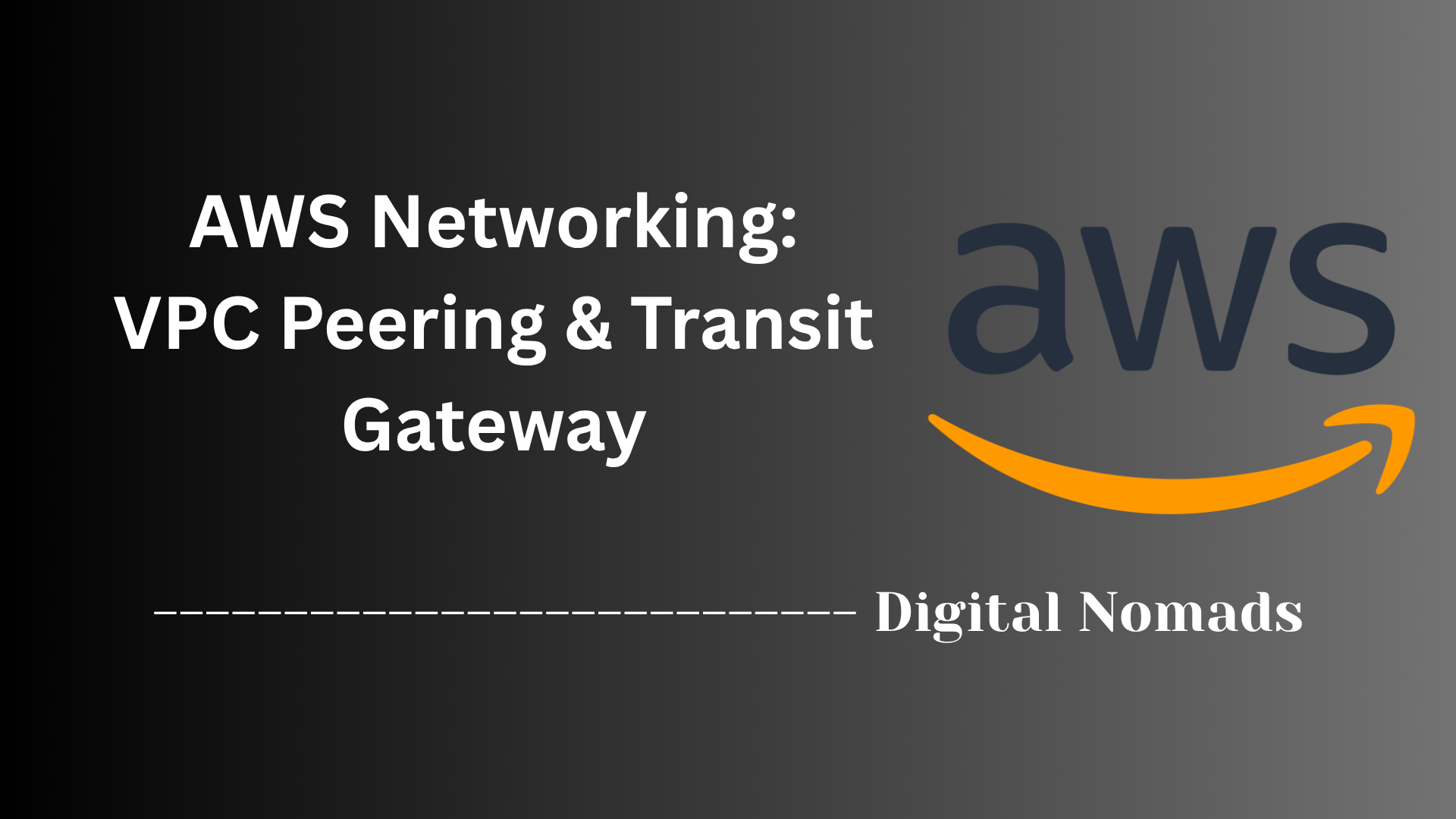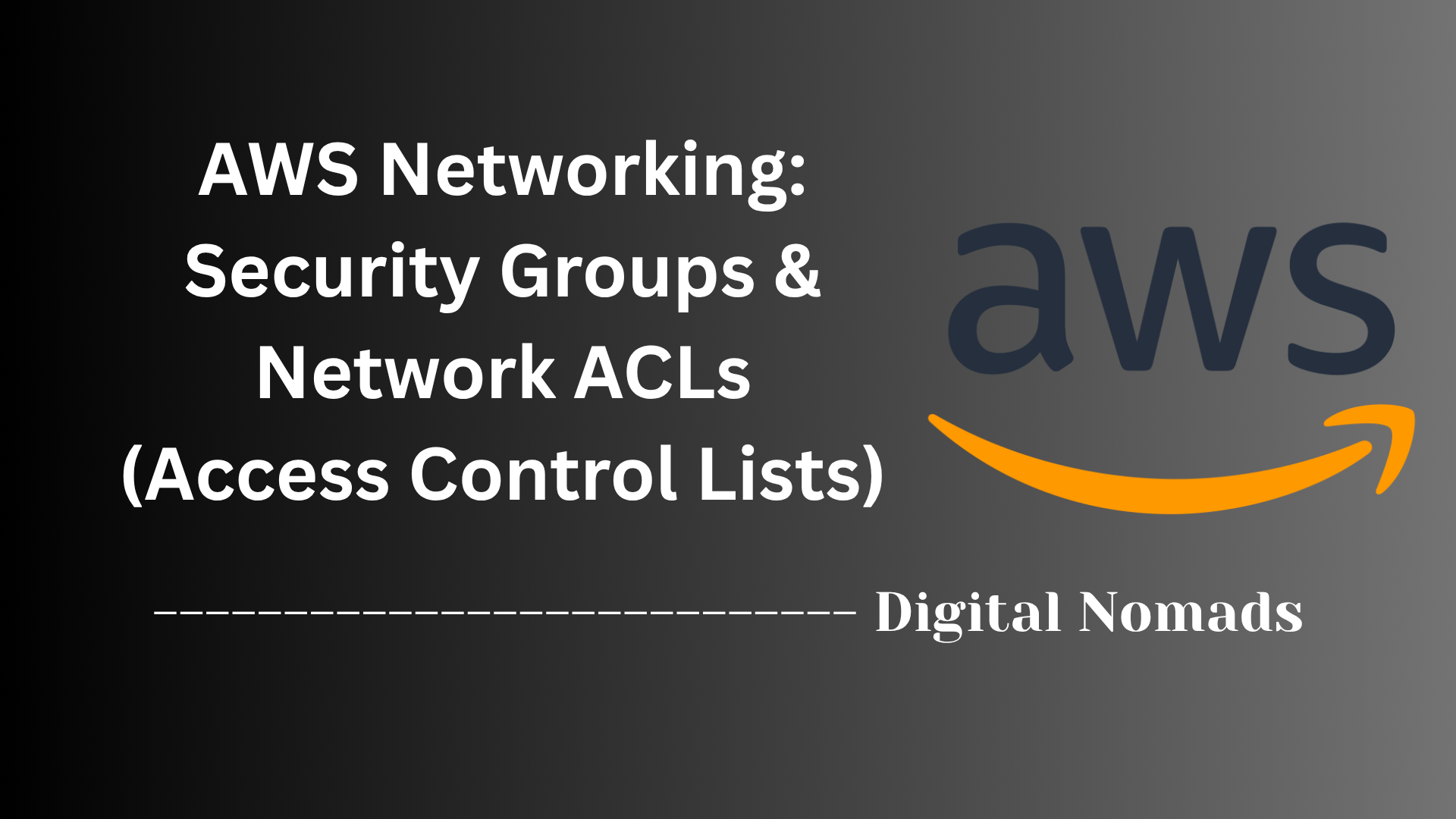Table of Contents
- Overview
- Core Components
- Prerequisites
- Configuration
- Validation
- Troubleshooting
- Conclusion
AWS Networking: Deep Dive Overview
What is AWS Networking?
AWS Networking refers to the suite of services, tools, and features within the Amazon Web Services ecosystem that allow you to design, build, manage, and secure cloud-based networks. It encompasses everything from logically isolated networks (VPCs) to connectivity solutions, routing, and access controls, providing the foundation for communication between AWS resources and the outside world.
Key elements include:
- Amazon Virtual Private Cloud (VPC): Your own isolated network environment in AWS.
- Subnets, Route Tables, and Gateways: Control traffic flow within and outside the VPC for granular organization and security.
- Security Mechanisms: Use security groups and network ACLs to manage inbound and outbound access.
- Connectivity Solutions: Integrate on-premises resources or other cloud domains using Direct Connect, VPNs, or VPC Peering.
Why Do You Need to Know About AWS Networking?
Understanding AWS Networking is essential for anyone working in cloud environments because:
- Foundation for All Cloud Workloads: Every AWS service that communicates or needs security relies on networking configuration.
- Security and Compliance: Correctly setting up networks is critical to protect data and ensure compliance with industry standards.
- Performance and Cost Optimization: Well-designed networks improve application speed and reliability, and prevent unnecessary data transfer costs.
- Critical for Scalability: Proper networking enables you to expand to multiple regions or accounts while maintaining connectivity and security.
- Career Relevance: AWS Networking expertise is in high demand for cloud, DevOps, and IT professionals.
How Does AWS Networking Work?
AWS Networking combines several modular, configurable components that you orchestrate to meet your needs:
- Create a VPC to establish your own network space in the cloud, defining IP ranges and dividing it into subnets (public or private).
- Configure Routing and Gateways to control how data moves between subnets, to the internet, or to on-premises networks via route tables, internet gateways, and NAT gateways.
- Apply Security Controls using security groups for instance-level, stateful firewalls and network ACLs for subnet-level, stateless rules.
- Connect Resources across AWS accounts or physical locations using VPC peering, Transit Gateway, Direct Connect, or VPN solutions.
- Monitor and Log Traffic with tools like VPC Flow Logs and CloudWatch to observe, troubleshoot, and optimize your networking setup.
AWS Networking is the backbone of any cloud deployment, providing secure, reliable, and customizable connectivity for workloads ranging from simple websites to complex, global enterprises. Gaining proficiency enables you to design, secure, and troubleshoot effective network architectures supporting diverse business needs.
Core Components
These are the foundational building blocks of AWS Networking, essential for building secure, scalable, and highly available architectures:
- Amazon Virtual Private Cloud (VPC): A logically isolated section of AWS where you can launch AWS resources in a defined virtual network. You design your VPC by specifying its IP address range, subnets, route tables, and network gateways.
- Subnets: Segments of a VPC that let you group resources based on security and operational requirements. Subnets can be public (directly accessible from the internet) or private (internal communication only).
- Route Tables: Control network traffic routing within your VPC by specifying rules that direct traffic between subnets, to the internet, or to on-premises resources.
- Internet Gateway: A horizontally scaled, redundant, and highly available VPC component that allows communication between resources in your VPC and the internet.
- NAT Gateway: Enables outbound internet access for resources in a private subnet while keeping them inaccessible from the internet.
- Security Groups: Virtual firewalls that control inbound and outbound traffic to AWS resources at the instance level, operating with stateful rules.
- Network ACLs (Access Control Lists): Stateless firewalls that operate at the subnet level, enabling fine-grained control of traffic entering or leaving a subnet.
- VPC Peering & Transit Gateway: Mechanisms to interconnect multiple VPCs, either directly (VPC Peering) or via a central hub (Transit Gateway) to streamline communication across the cloud environment.
- AWS Direct Connect: Establishes a dedicated network connection from your on-premises environment to AWS, providing consistent performance and lower latency for hybrid architectures.
Prerequisites
Before diving into AWS Networking, you should have the following technical and practical prerequisites in place to ensure a smooth setup and implementation:
- Basic AWS Account: You need an active AWS account with appropriate permission to create, modify, and manage network resources such as VPCs, subnets, and security groups.
- Fundamental Networking Knowledge: Familiarity with networking concepts including IP addressing (IPv4/IPv6), subnets, CIDR notation, routing, firewalls, and common protocols (TCP/UDP) is important for configuring and troubleshooting cloud networks[5][8].
- AWS Console and CLI Skills: Ability to navigate the AWS Management Console and use the AWS Command Line Interface to provision and manage network resources.
- Core AWS Services Experience: Understanding of core AWS services like EC2, S3, and IAM, as they interact with networking components and impact network design[5][8].
- Virtual Private Cloud (VPC) Planning: Prior to creating resources, define your VPC’s CIDR blocks, plan public/private subnets, and identify at least two different Availability Zones for high availability[2][5].
- Security Readiness: Familiarity with AWS Security Groups and Network ACLs to control inbound/outbound traffic, and understanding of encryption for securing data in transit[11].
- Connectivity Requirements: Determine if you require private connectivity to on-premises infrastructure (AWS Direct Connect or VPN), and ensure your bandwidth and latency needs are met for hybrid or large-scale deployments[7][3].
- Subnet and Address Availability: Ensure each subnet has enough available IP addresses (minimum six, but ideally 16 or more) and is distributed across at least two Availability Zones for services that require resilience[2].
By ensuring these prerequisites are covered, you’ll establish a solid foundation for building secure, scalable, and robust networks within AWS.
Configuration
This section provides a step-by-step approach to configuring a basic AWS Virtual Private Cloud (VPC) and its core networking components:
-
Access the VPC Dashboard:
- Log in to your AWS Management Console.
- In the top search bar, type VPC and select VPC from the results to enter the VPC dashboard[4][6][7].
-
Create a VPC:
- Click the Create VPC button.
- Enter a meaningful name for your VPC.
- Specify an IPv4 CIDR block such as
10.0.0.0/16(or your preferred range). - Optionally add an IPv6 block for dual-stack support.
- Select the tenancy (default is shared hardware).
- Click Create VPC to provision your network[3][5][7].
-
Create Subnets:
- In the VPC dashboard, navigate to Subnets and click Create subnet.
- Select your VPC, add a name, and provide a CIDR block (e.g.,
10.0.1.0/24for public subnet,10.0.2.0/24for private subnet). - Select the appropriate Availability Zone for each subnet.
- Click Create subnet to add each subnet[5][7].
-
Create and Attach an Internet Gateway:
- In the dashboard, select Internet Gateways → Create internet gateway.
- Give it a name and click Create internet gateway.
- Select the new Internet Gateway, choose Attach to VPC, and pick your VPC.
-
Configure Route Tables:
- In the VPC dashboard, navigate to Route Tables.
- Create a route table for your public subnet. Associate it with the public subnet and add a route:
- Destination:
0.0.0.0/0→ Target: your Internet Gateway.
- Destination:
- Private subnets use a separate route table without an internet route to remain isolated[5].
-
Set Up Security Groups and Network ACLs:
- Define Security Groups to control inbound/outbound traffic at the instance level (e.g., allow SSH, HTTP).
- Configure Network ACLs as necessary for subnet-level traffic rules[5].
-
Deploy Instances and Test Connectivity:
- Launch EC2 instances into your subnets as needed (public or private).
- Ensure public instances are reachable via the Internet and private instances via internal routing only[5].
By following these steps, you establish a functional, secure, and scalable AWS network architecture that you can further expand and customize for your application needs.
Validation
This section walks you through verifying your AWS Networking setup to ensure functionality, security, and alignment with best practices:
-
Verify VPC and Subnets:
- In the AWS VPC dashboard, confirm your VPC and subnets are listed with the correct CIDR ranges.
- Ensure subnets are associated with your selected Availability Zones for redundancy and fault tolerance.
-
Check Internet and NAT Gateway Attachments:
- Verify the Internet Gateway is attached to your VPC for public subnets.
- If using NAT Gateway, ensure it is deployed in a public subnet and referenced in the route tables for private subnets.
-
Validate Route Tables:
- Open the Route Tables section, review associations for each subnet, and check routes for correct paths (e.g.,
0.0.0.0/0pointing to the Internet Gateway for public subnets). - Confirm private subnets do NOT have direct internet routes.
- Open the Route Tables section, review associations for each subnet, and check routes for correct paths (e.g.,
-
Test Instance Connectivity:
- Launch a test EC2 instance in the public subnet and connect via SSH or RDP using its public IP.
- Ping external domains (e.g.,
ping amazon.com) to confirm outbound access from public subnet instances. - For private subnets, launch an instance and verify it can access the internet through the NAT Gateway but is not reachable from outside.
-
Audit Security Groups and Network ACLs:
- Review your Security Group rules to ensure only required ports/services are open (e.g., TCP 22 for SSH, TCP 80/443 for web servers).
- Double-check Network ACLs for overly permissive rules and confirm traffic is restricted as expected.
-
Monitor Logs and Flow Data:
- Enable VPC Flow Logs for your VPC or specific subnets to monitor accepted and rejected traffic. Analyze the log data to spot unauthorized access or misconfiguration.
-
Optional: Validate Hybrid Connectivity
- If using AWS Direct Connect or VPNs, test communication from on-premises to AWS resources and back. Ensure routes and security permissions align with your hybrid architecture requirements.
Completing these validation steps helps ensure your AWS Networking environment operates correctly, securely, and is ready for production workloads.
Troubleshooting
This section guides you step by step through troubleshooting common AWS networking issues to quickly identify and resolve connectivity problems:
-
Confirm Instance Health and Configuration:
- Ensure the server or instance is running and reachable.
- Verify that it has the correct public or elastic IP assigned, especially for public-facing resources.
-
Check Security Groups and Network ACLs:
- Review Security Group settings to confirm that required ports (e.g., SSH 22, HTTP 80/HTTPS 443) are open for inbound and outbound rules.
- Inspect Network ACLs to ensure they allow intended traffic; remember, ACLs are stateless and rules must allow responses back through the same ports.
-
Review Route Tables:
- Open the VPC dashboard and check that route tables for each subnet have the correct routes (e.g.,
0.0.0.0/0directed to an Internet Gateway for public subnets, or a NAT Gateway for private subnets). - Missing or incorrect routes are a common cause of lost connectivity.
- Open the VPC dashboard and check that route tables for each subnet have the correct routes (e.g.,
-
Verify Gateway Attachments:
- Ensure an Internet Gateway is attached to the VPC for internet-facing resources, or a NAT Gateway is set up in the correct subnet for outbound access from private instances.
- Check that gateways are referenced in the respective subnet route tables.
-
Check IP Addressing & Subnet Overlaps:
- Ensure there are no overlapping CIDR blocks between your subnets, VPC peerings, or VPNs which could cause traffic ambiguity and connectivity failures.
-
Test Connectivity:
- Use tools like
pingortraceroute(Linux) /tracert(Windows) to test reachability from your instance to key endpoints (e.g., gateway, internet, other AWS services). curl -i https://s3.amazonaws.com/pingor AWS CLI commands help verify internet access at the protocol level.
- Use tools like
-
Monitor with VPC Flow Logs:
- Enable VPC Flow Logs to capture information about accepted or rejected traffic at the network interface level.
- Analyze logs to determine if traffic is being dropped and at which layer or component.
-
Use Reachability Analyzer:
- The AWS VPC Reachability Analyzer simulates a network path between two endpoints and pinpoints where traffic is blocked—helpful for diagnosing complex architectures.
-
Review AWS Service Health:
- Check the AWS Service Health Dashboard for outages or incidents affecting networking in your region.
-
If All Else Fails:
- Compare your non-working setup to a known good configuration if available.
- Capture diagnostic data (e.g., logs, error codes, config snapshots) and contact AWS Support for expert assistance if the problem persists.
Following this structured approach ensures that AWS networking issues are quickly isolated and efficiently resolved, reducing downtime and restoring connectivity for your applications.
Conclusion
Throughout this deep dive into AWS Networking, we've explored the foundational concepts, configurations, and tools that enable you to build secure, scalable, and highly available cloud networks using Amazon Web Services. Whether you're designing a simple environment for a web app or architecting an enterprise-grade hybrid network, a solid grasp of AWS networking fundamentals is essential.
Key Takeaways:
- AWS Networking is foundational to nearly every cloud deployment. Services like EC2, RDS, Lambda, and even S3 rely on network configurations for internal and external communication.
- Core components like VPCs, subnets, route tables, internet/NAT gateways, security groups, and network ACLs form the backbone of your AWS environment. Understanding and correctly configuring these pieces ensures robust performance and security.
- Prerequisites such as a working knowledge of IP addressing, AWS console/CLI familiarity, and subnet planning are crucial before you begin building.
- Configuration steps guide you from VPC creation to troubleshooting. Following a clear, structured setup prevents most connectivity and access issues down the line.
- Validation is critical to confirm that everything works as expected. Checking connectivity, reviewing firewall rules, and monitoring with VPC Flow Logs and Reachability Analyzer help you catch misconfigurations early.
- Troubleshooting tips save you time when things go wrong. Knowing where to look—whether it's a missing route, misconfigured security group, or forgotten gateway—can help you resolve issues quickly and confidently.
Thanks for following along with this deep dive into AWS Networking! 🎯 Whether you're getting started with cloud networking or sharpening your existing skills, we hope this guide provided value and clarity. Remember, great network architecture is the foundation of any high-performing cloud solution—so take the time to plan, validate, and secure it from the ground up.
Happy networking in the cloud! 🚀




